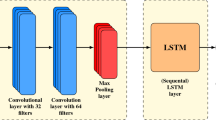Abstract
In this paper, we develop a new Hybrid method based on machine learning algorithms for jump detection in financial time series. Jump is an important behavior in financial time series, since it implies a change in volatility. Ones can buy the volatility instrument if ones expect the volatility will bloom up in the future. A jump detection model attempts to detect short-term market instability, since it could be jumping up or down, instead of a directional prediction. The directional prediction can be considered as a momentum or trend following, which is not the focus of this paper. A jump detection model is commonly applied in a systematic fast-moving strategy, which reallocates the assets automatically. Also, a systematic opening position protection strategy can be driven by a jump detection model. For example, for a tail risk protection strategy, a pair of long call and put option order could be placed in the same time, in order to protect the open position given a huge change in volatility. One of the key differentiations of the proposed model with the classical methods of time-series anomaly detection is that, jump threshold parameters are not required to be predefined in our proposed model. Also the model is a combination of a Long short-term memory (LSTM) neural network model and a machine learning pattern recognition model. The LSTM model is applied for time series prediction, which predicts the next data point. The historical prediction errors sequence can be used as the information source or input of the jump detection model/module. The machine learning pattern recognition model is applied for jump detection. The combined model attempts to determine whether the current data point is a jump or not. LSTM neural network is a type of Recurrent Neural Networks (RNNs). LSTM records not only the recent market, but also the historical status. A stacked RNN is trained on a dataset which is mixed with normal and anomalous data. We compare the performance of the proposed Hybrid jump detection model and different pattern classification algorithms, such as k-nearest neighbors algorithm identifier, Hampel identifier, and Lee Mykland test. The model is trained and tested using real financial market data, including 11 global stock market in both developed and emerging markets in US, China, Hong Kong, Taiwan, Japan, UK, German, and Israel. The experiment result shows that the proposed Hybrid jump detection model is effective to detect jumps in terms of accuracy, comparing to the other classical jump detection methods.








Similar content being viewed by others
References
Aït-Sahalia Y, Jacod J (2009) Testing for jumps in a discretely observed process. Ann Stat 37(1):184–222
Barndorff-Nielsen O, Shephard N (2005) Variation, jumps, market frictions and high frequency data in financial econometrics, economics papers 2005-W16, Economics Group, Nuffield College, University of Oxford. https://EconPapers.repec.org/RePEc:nuf:econwp:0516. Accessed 14 July 2005
Chandola V, Banerjee A, Kumar V (2009) Anomaly detection: a survey. ACM Comput Surv (CSUR) 41(3):15
Chen Q, Chetty K, Woodbridge K, Tan B (2016) Signs of life detection using wireless passive radar. In: Radar conference (RadarConf), 2016 IEEE. IEEE, pp 1–5
Choi OT (2013) In depth analysis of the dually listed companies in hong kong and china stock markets prior and posterior to the global financial turmoil. Int J Econ Finance 5(10):100–110
Cortes C, Vapnik V (1995) Support vector networks. Mach Learn 20(3):273–297
Cunningham P, Delany SJ (2007) k-Nearest neighbour classifiers. Mult Classif Syst 34:1–17
Freund Y, Mason L (1999) The alternating decision tree learning algorithm. In: Proceedings of the sixteenth international conference on machine learning, pp 124–133
Goodfellow I, Bengio Y, Courville A (2016) Deep learning. MIT press, Cambridge
Hermans M, Schrauwen B (2013) Training and analysing deep recurrent neural networks. In: Advances in neural information processing systems 26 (NIPS 2013)
Hochreiter S, Schmidhuber J (1997) Long short-term memory. Neural Comput 9(8):1735–1780
Knorr EM, Ng RT, Tucakov V (2000) Distance-based outliers: algorithms and applications. Int J Very Large Data Bases 8(3–4):237–253
Lee SS, Mykland PA (2008) Jumps in financial markets: a new nonparametric test and jump dynamics. Rev Financial Stud 21(6):2535–2563
Makinen M, Kanniainen J, Gabbouj M, Iosifidis A (2018) Forecasting of jump arrivals in stock prices: new attention-based network architecture using limit order book data. arXiv:1810.10845
Malhotra P, Vig L, Shroff G, Agarwal P (2015) Long short term memory networks for anomaly detection in time series. In: Proceedings, Presses universitaires de Louvain, p 89
Pearson RK (2002) Outliers in process modeling and identification. IEEE Trans Control Syst Technol 10(1):55–63
Pearson RK, Neuvo Y, Astola J, Gabbouj M (2015) The class of generalized hampel filters. In: 2015 23rd European signal processing conference (EUSIPCO), IEEE, pp 2501–2505
Perron P, Yabu T (2009) Testing for shifts in trend with an integrated or stationary noise component. J Bus Econ Stat 27(3):369–396
Ramaswamy S, Rastogi R, Shim K (2000) Efficient algorithms for mining outliers from large data sets. In: Proceedings of the 2000 ACM SIGMOD international conference on management of data 29(2):427–438
Suykens JA, Vandewalle J (1999) Least squares support vector machine classifiers. Neural Process Lett 9(3):293–300
Tauchen G, Zhou H (2011) Realized jumps on financial markets and predicting credit spreads. J Econom 160(1):102–118
Tong S, Koller D (2001) Support vector machine active learning with applications to text classification. J Mach Learn Res 2(Nov):45–66
Wang Q, Garrity GM, Tiedje JM, Cole JR (2007) Naive bayesian classifier for rapid assignment of rrna sequences into the new bacterial taxonomy. Appl Environ Microbiol 73(16):5261–5267
Author information
Authors and Affiliations
Corresponding author
Ethics declarations
Conflict of interest
The authors declare that they have no conflict of interest.
Ethical approval
This article does not contain any studies with human participants performed by any of the authors.
Additional information
Communicated by V. Loia.
Publisher's Note
Springer Nature remains neutral with regard to jurisdictional claims in published maps and institutional affiliations.
Rights and permissions
About this article
Cite this article
Au Yeung, J.F.K., Wei, Zk., Chan, K.Y. et al. Jump detection in financial time series using machine learning algorithms. Soft Comput 24, 1789–1801 (2020). https://doi.org/10.1007/s00500-019-04006-2
Published:
Issue Date:
DOI: https://doi.org/10.1007/s00500-019-04006-2




